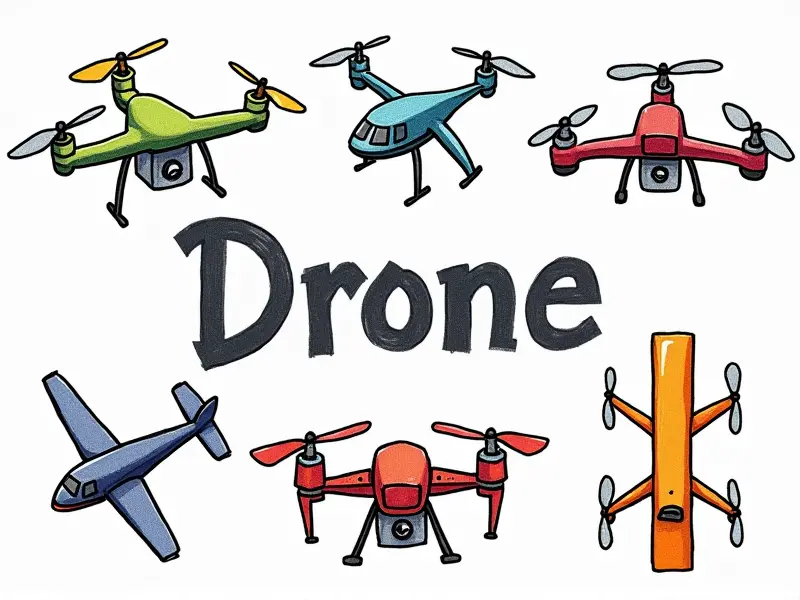What are brushless motors?

Understanding Brushless Motors Basics
Brushless motors, also known as electronically commutated (EC) motors or BLDC motors, represent a significant advancement in motor technology. Unlike traditional brushed DC motors, brushless motors do not rely on mechanical brushes to switch the current flow within the motor windings. Instead, they use electronic circuits and sensors to control the timing of the electrical pulses that energize each phase of the stator coils.
The absence of brushes eliminates friction and wear-related issues, leading to higher efficiency, longer lifespan, and improved performance in various applications such as robotics, drones, electric vehicles (EVs), and industrial machinery. The core components of a brushless motor include a rotor with permanent magnets, a stator with wound coils, and an electronic controller that manages the current flow.
Benefits of Brushless Motors Explained
The primary advantage of brushless motors is their efficiency. By removing mechanical brushes and commutators, these motors reduce energy losses due to friction and electrical resistance. This results in higher torque output at lower speeds and better power-to-weight ratios.
- Efficiency: Brushless motors can achieve efficiencies of up to 90%, compared to around 75-80% for brushed motors.
- Durability: The lack of brushes means there are fewer components that wear out over time, leading to a longer operational lifespan.
- No EMI (Electromagnetic Interference): Brushless motors produce less electromagnetic interference because they do not have the mechanical switching mechanism found in brushed motors.
- Quiet Operation: Without brushes and commutators, brushless motors operate more quietly than their brushed counterparts.
- Torque Density: Brushless motors can deliver higher torque density due to their compact design and efficient energy use.
Types of Brushless Motors Used Today
Brushless motors come in various types, each designed for specific applications. Here are some common varieties:
- Inrunner (Internal Rotor) Motors: These have a rotor that is located inside the stator and are commonly used in high-performance applications like drones and RC cars.
- Outrunner (External Rotor) Motors: The rotor is outside the stator, which allows for better heat dissipation and higher torque output. They are often found in electric bicycles and power tools.
- Canned Brushless Motors: These motors have a sealed housing that protects the internal components from dust and moisture, making them ideal for industrial environments.
Why Choose Brushless Over Brushed Motors?
The choice between brushless and brushed motors depends on several factors including application requirements, cost considerations, and performance needs. Here are some reasons why you might prefer a brushless motor:
- Better Performance: Brushless motors offer superior speed control, higher torque output, and better efficiency.
- Lower Maintenance Costs: With fewer moving parts that wear out over time, brushless motors require less maintenance and have lower long-term costs.
- Better for High-Performance Applications: Brushless motors excel in applications requiring high speeds and precise control, such as drones and robotics.
DIY: Building with Brushless Motors
If you're interested in building your own projects using brushless motors, there are several steps to consider. First, identify the type of motor suitable for your project based on its power requirements and intended use. Next, select an appropriate electronic speed controller (ESC) that can handle the motor's specifications.
For DIY enthusiasts working with RC drones or FPV racing vehicles, integrating brushless motors involves connecting them to ESCs via wires and ensuring proper firmware settings for optimal performance. It’s important to test your setup thoroughly before deploying it in real-world scenarios.
Common Issues with Brushless Motors
Despite their advantages, brushless motors can encounter certain issues:
- Burnt Windings: Overheating due to excessive load or inadequate cooling can damage the motor windings.
- Magnet Degradation: Prolonged exposure to high temperatures may cause permanent magnets in the rotor to lose their magnetic properties.
- Controller Malfunction: Faulty ESCs can lead to erratic behavior or complete failure of the motor system.
Future Trends in Brushless Motor Tech
The future of brushless motors is promising, with ongoing advancements aimed at improving efficiency and performance. Innovations such as advanced materials for rotor magnets, improved cooling systems, and more sophisticated control algorithms are expected to enhance motor capabilities further.
In addition, the integration of IoT (Internet of Things) technologies will enable real-time monitoring and predictive maintenance for brushless motors in industrial settings, reducing downtime and increasing operational efficiency.
Top Brushless Motors for RC Drones
Selecting the right brushless motor for your RC drone is crucial. Popular choices include:
- T-Motor F80 1756 KV: Known for its high torque and efficiency, this motor is ideal for large drones.
- DYS X35 2490 KV: Offers excellent power-to-weight ratio and precise control, making it suitable for racing applications.
Maximizing Efficiency with Brushless Motors
To maximize the efficiency of brushless motors, consider these tips:
- Proper Sizing: Choose a motor that matches your application's power requirements to avoid overloading.
- Cooling Solutions: Implement effective cooling methods such as heat sinks or fans to prevent overheating.
- Optimal Speed Control: Use ESCs with advanced speed control features to maintain optimal performance across different loads.
Maintaining Brushless Motors Efficiently
Regular maintenance is key to extending the lifespan of brushless motors. Here are some tips:
- Clean Regularly: Remove dust and debris from the motor housing to prevent overheating.
- Check Connections: Ensure all electrical connections are secure and free of corrosion.
- Monitor Performance: Keep an eye on motor performance indicators such as temperature and vibration levels.
Top Brushless Motors for FPV Racing
For FPV racing enthusiasts, the following motors are highly recommended:
- T-Motor F40 2537 KV: Provides exceptional power and agility in tight turns.
- DYS X6 2819 KV: Known for its high torque output, making it ideal for fast-paced racing scenarios.
Conclusion
In summary, brushless motors offer numerous advantages over traditional brushed motors in terms of performance and longevity. By understanding their benefits, common issues, and maintenance requirements, you can make informed decisions when selecting and using brushless motors for various applications. As technology continues to evolve, the future holds even more exciting developments in this field.

